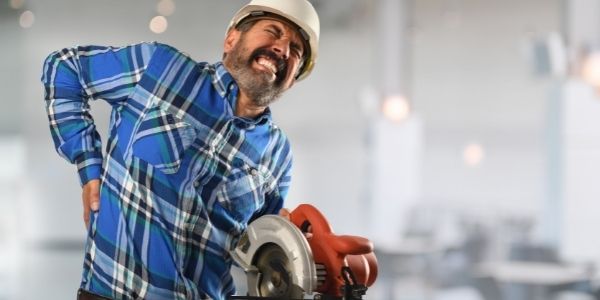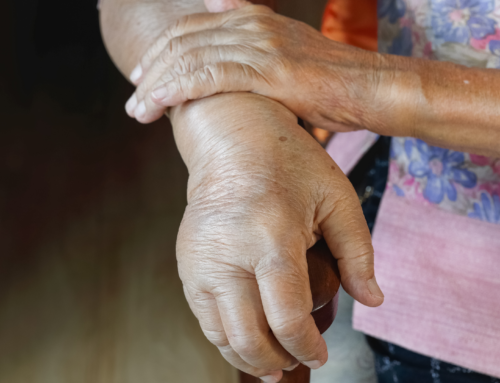Back problems are one of the most common chronic conditions in Canada.[i] Four out of five adults will experience at least one episode of back pain at some time in their lives with most occurrences between the ages of 30 and 50.[ii] Back injury prevention programs aim to reduce the risk and severity of injuries, as well as the cost.
At Propel Physiotherapy, we treat clients with a range of back problems, from acute injuries like lower back strain to more chronic issues like degenerative disc disorder or facet joint osteoarthritis.
As effective as physiotherapy can be in managing these issues, we would all benefit far more from reducing the instances and severity of back injury and back pain with preventative care. In this article, we discuss some of the most common causes of back pain. We also outline our physiotherapy approach to back injury prevention programs.
What is the Most Common Cause of Back Injury?
Back pain can occur at any point of the spine, and is characterized by a range of symptoms including pain, muscle tension or stiffness, weakness in the legs or feet, and a possible tingling or burning sensation, often traveling down the legs (sciatica).[iii]
Some of the most common causes of back pain are strains and sprains of the components that make up the back. Muscles, joints, ligaments, and discs can be perturbed due to a number of reasons resulting in back pain. Because the lower back bears the most weight and physical stresses, it is the area most commonly affected.
Herniated (Bulging) Disc
A herniated disc refers to the condition where the disc ruptures. The soft substance in the middle of the disc pushes out through the tear. A herniated disc can occur in any part of the spine. Herniated disc pain is often burning or stinging and can radiate into the legs. If left untreated, this type of back injury can lead to pain, loss of function and mobility. Learn more about the causes, symptoms and herniated disc treatment.
Compression Fractures
Compression fractures occur when the vertebral body breaks. This happens in response to stress or pressure placed on the vertebrae. Compression fractures can occur in healthy bone, in some cases. For example, trauma from a motor vehicle collision or fall. Learn more about compression fracture causes, symptoms and management.
Although these may be some of the more common causes to experiencing back pain, this is not to say the cause is always apparent or that back pain is not paired with other diagnoses such as arthritis, lumbar radiculopathy, or discogenic pathology.
How Do I Know if My Back Injury is Serious?
It’s true that no two injuries are the same. Many bouts of back pain resolve with conservative management, such as appropriate rest during the acute phase, and a tailored movement program to properly load the back and/or spine. In some instances, however, low back pain may be part of a more insidious issue.
Registered physiotherapists have been trained to ask key questions pertaining to visceral health (such as sensation, bowel and bladder control, changes in bodily function) and strength associated with other pathologies.
In general, if the pain continues to last after 2-3 days and you’ve experienced bouts of back pain in the past, it’s a clear indication that you should be seen from a regulated health professional to address any underlying issues you may require addressing.
Back Injury Prevention Program Approach
Chronic low back pain has the ability to disable 11-12% of the population leading to huge physical, mental and financial strains to those affected by this condition. Aside from the experience of pain and soreness in the areas of the low back, it continues to be the top reason for lost work hours and workman’s compensation[iv]. In addition, chronic low back pain is also associated with depression and other mental health disorders.[v]
For these reasons, focusing our efforts on back injury prevention programs is more prudent than treatment alone. A recent systematic review and meta-analysis by Steffens et al., 2016[vi] determined that exercise in combination with low back pain education reduced the relative risk of having an episode of low back pain. Some of the exercises in the studies included:
- low back strengthening
- endurance exercises
- spinal mobility exercises
- deep core activation exercises (like cueing and activating transverse abdominus)
- activation of deep spine muscles such as erector spinae, quadratus lumborum, and multifidi
Some of the education included biomechanically effective lifting techniques, education on the spine and anatomy of the structures in the spine.
From a clinical perspective, it makes sense that a healthier, more resilient spine would lead to less incidences of low back pain. In addition, the more you know about your low back, the better your ability to address and understand any instances of low back pain.
What does that look like and how do we realistically achieve this throughout our lives? Given the research evidence and physical activity guidelines for adults in Canada, you can incorporate prevention of low back pain in the following ways:
1. Consult your health professional regarding low back pain education. Sometimes a little bit of information can go a long way, especially if you have questions pertaining to the right movements to do, and when to do them.
2. Incorporate spinal mobility, endurance and strength training for the low back into your weekly exercises or physical activity routine. It doesn’t need to be complicated or too taxing if you’re not keen on going to a formal gym or studio setting. These exercises are a great way to prevent the onset of low back pain and keep your spine in great working order:
- pelvic tilts
- deep core activation
- cat-camels
- bird-dogs
- book openers
- modified curl-ups
- planks (and similar exercises or modifications)
- and Palloff presses
3. Remember to train functionally. I think this is often a missing piece of many exercise routines. Functional lifting requires core and spine engagement throughout the entire range of motion. This is where we encourage proper form, decreased resistance, and a true mind-to-muscle connection. For example, instead of using a machine to practice hyper extension of the low back muscles for muscle gain, try using that same group of muscles and really concentrate on activating them through a straight-leg deadlift in conjunction with your lower body and hamstrings.
You may also enjoy reading: How to Meet WHO Physical Activity Guidelines
Low Back Injury Treatment
As physiotherapists, we take into account the mechanism of injury, pathophysiology, and anatomical or physiological structures involved, the chronicity of the injury, and other pertinent past medical history when providing an assessment.
The evidence suggests that regardless of the type of lower back injury or condition, appropriate movement or mobilizations, strengthening, and loading (at the correct timeline) are one of the best forms of treatment. In other words, exercise is the best medicine.
However, that does not mean that all lower back issues will respond to the same exercises or mobilizations. Having an assessment conducted by a registered physiotherapist will ensure the movements and exercises you perform are ideal for your lower back issues. Learn more about our active approach to lower back pain treatment.
If you or someone you love has experienced low back pain that requires treatment or a back injury prevention program, contact us to set up a phone consultation or book an assessment with one of our physiotherapists.
References
[i] Schultz SE, Kopec JA. Impact of chronic conditions. Health Reports 2003; 14 (4): 41–53. [Statistics Canada, Catalogue 82-003].
[ii] McPhillips-Tangum CA, Cherkin DC, Rhodes LA, Markham C. Reasons for repeated medical visits among patients with chronic back pain. J Gen Intern Med 1998; 13: 289–295.
Mayo Clinic. What Is Back Pain? [Online]. Accessed December 2004.
Hicks GS, Duddleston DN, Russell LD, Holman HE, Shepherd JM, Brown A. Low back pain. The American Journal of the Medical Sciences 2002; 324 (4): 207–211.
Wheeler AH, Stubbart JR, Hicks B. Pathophysiology of chronic back pain. eMedicine [Online] Accessed December 2004.
[iii] Back Pain, Statistics Canada
[iv] Casiano VE, De NK. Back Pain InStatPearls [Internet] 2019 Feb 24. StatPearls Publishing. Available from:(Last accessed July 26, 2021).
[v] Ibid
[vi] Prevention of Low Back Pain A Systematic Review and Meta-analysis. JAMA Intern Med. 2016; 176(2):199-208. Daniel Steffens, PhD; Chris G. Maher, PhD; Leani S. M. Pereira, PhD; Matthew L Stevens, MScMed (Clin Epi); Vinicius C. Oliveira, PhD; Meredith Chapple, BPhty; Luci F. Teixeira-Salmela, PhD; Mark J. Hancock, PhD.
Written by

















